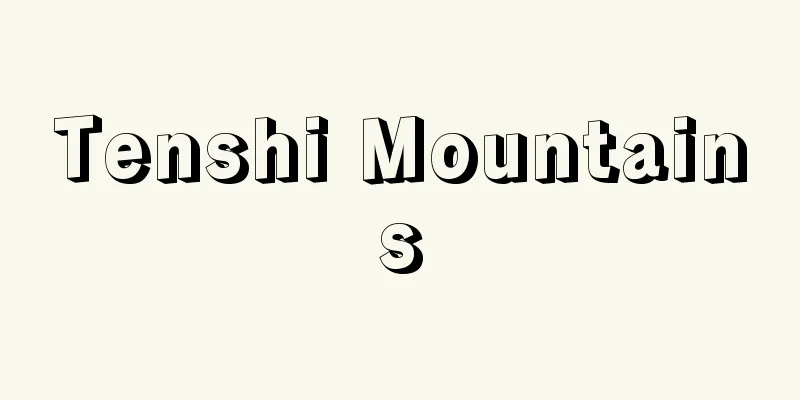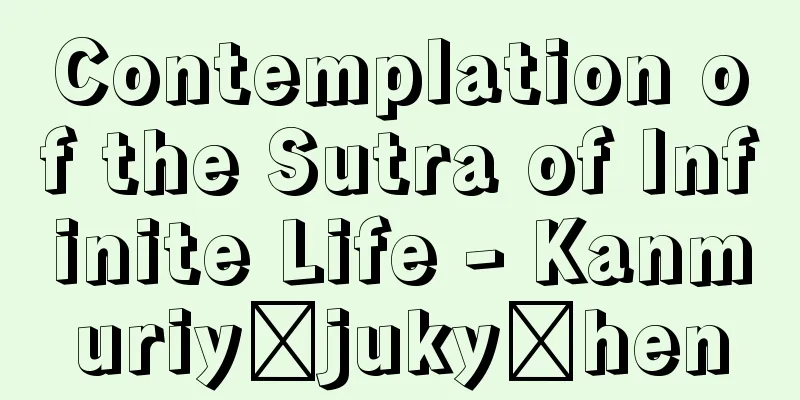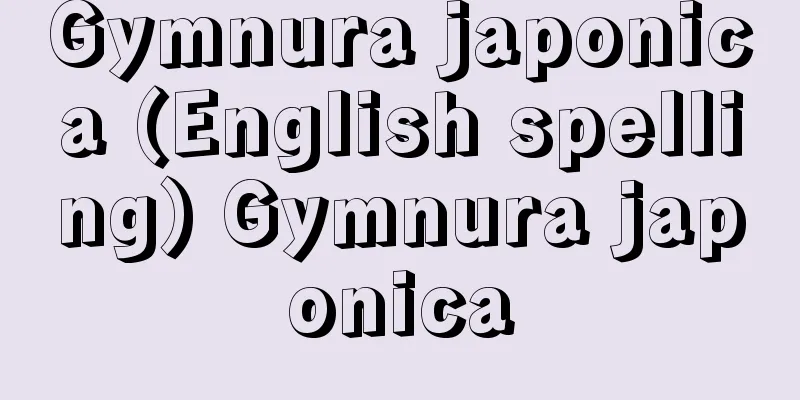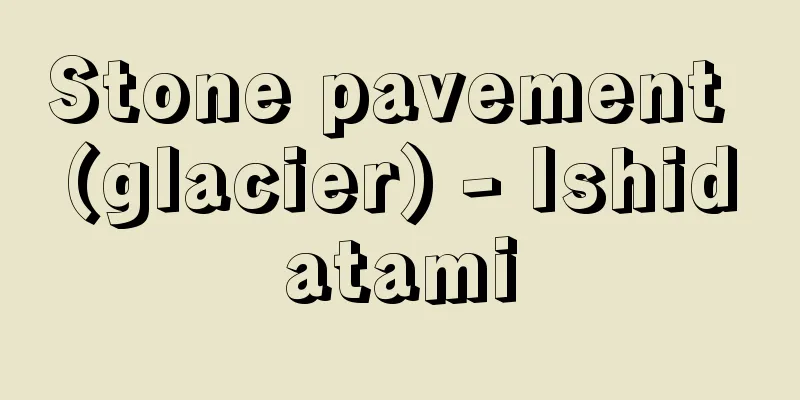Kanshinji Temple

|
Located in Teramoto, Kawachinagano City, Osaka Prefecture, this temple belongs to the Koyasan Shingon sect. It is called Hinoozan. It was founded by En no Gyoja during the Taiho era (701-704) and was originally called Unshinji, but in 827 (Tencho 4), Kukai's disciple Jichie and Shinjo built a temple tower and renamed it Kanshinji. From then on, Jichie became the founder, and the temple later developed into Jogakuji. During the Northern and Southern Courts period, the temple had strong ties with the Southern Court, and during the Kenmu Restoration (1334), Kusunoki Masashige became the magistrate and rebuilt the outer sanctuary of the main hall and attempted to build a separate three-story pagoda, but he died in battle at Minatogawa halfway through the work, and today only the incomplete Nanko Tatekake-no-to (a national important cultural property) remains. The temple later became the temporary palace of Emperor Go-Murakami, and the tomb of the emperor is located there. After that, the Hatakeyama clan was a devout believer and worked hard to protect the temple, but Oda Nobunaga reduced the temple's land and the temple fell into some decline. However, Toyotomi Hideyoshi added land to the temple, Hideyori repaired the temple's pagoda and it was restored, and further repairs were made during the Kyoho era (1716-1736). During the Tenpo era (1830-1844), it became a place of prayer for Prince Arisugawa, and the Tokugawa clan also donated land to the temple. Although the temple has experienced many ups and downs since its founding, it still retains many temple buildings, pagodas, sculptures, paintings, crafts, and ancient documents, and is famous as a sacred place of esoteric Buddhism and as a historical site of the Southern Court. Currently, the main hall, which conveys the style of the Kamakura period, is a national treasure, while the Kariteimo Tendo hall from the end of the Muromachi period and the Shoin study from the Momoyama period are designated as important cultural properties of Japan. The principal image, the seated Nyoirin Kannon Bodhisattva (national treasure), was made in the early Heian period and is a painted six-armed statue that is a secret Buddha. In addition, the Reihokan Museum houses a group of Buddhist statues that are important cultural properties of Japan, including gilt bronze Shaka and Kannon statues (both made in the Nara period), prototype Nyoirin Kannon statues, statues of the Four Heavenly Kings, as well as statues of Shokannon, Eleven-headed Kannon, and Jizo Bodhisattva (all made in the early Heian period), as well as statues of Yakushi, Shaka, Hosho, and Miroku (all made in the late Heian period). In addition, the temple has many ancient documents and relics, including the Kanshinji Kanroku Engi Zaizaicho (National Treasure), four emperors Godaigo, Gomurakami, Chokei, and Gokameyama, Kusunoki Masashige and Masatsura, Kitabatake Chikafusa, the Hatakeyama, Miyoshi, and Matsunaga clans, Toyotomi Hideyoshi, and Hideyori, and the documents are known as the Kanshinji documents (National Important Cultural Property).In addition, within the temple grounds, there are the mausoleum of Jie, the Hongando Hall, the grave of the head of Dainanko, the Shichisei Tomb, and the Great Lecture Hall. [Katsumata Toshinori] "Ancient Temple Pilgrimage: Western Japan 2: Kanshinji Temple" (1981, Tankosha) Source: Shogakukan Encyclopedia Nipponica About Encyclopedia Nipponica Information | Legend |
|
大阪府河内長野(かわちながの)市寺元(てらもと)にあり、高野山真言宗に属する寺。檜尾山(ひのおざん)と号する。大宝(たいほう)年間(701~704)役行者(えんのぎょうじゃ)が創建し、初め雲心(うんしん)寺と号したが、827年(天長4)空海の弟子実慧(じちえ)が真紹(しんじょう)とともに寺塔を建立して観心寺と改めた。これより実慧を開山とし、のち定額寺(じょうがくじ)となって発展した。南北朝時代には南朝との関係が深く、建武(けんむ)新政(1334)のとき楠木正成(くすのきまさしげ)が奉行(ぶぎょう)となって金堂の外陣(げじん)を再建し、別に三層塔を建立しようとしたが、工事なかばで湊川(みなとがわ)に戦死し、現在、未完の楠公建掛塔(なんこうたてかけのとう)(国の重要文化財)が残っている。ついで後村上(ごむらかみ)天皇の行宮(あんぐう)となったこともあり、同天皇の御陵がある。その後、畠山(はたけやま)氏が篤信(とくしん)して護持に努めたが、織田信長が寺領を減じてやや衰微した。しかし豊臣(とよとみ)秀吉が寺領を加え、秀頼(ひでより)が寺塔の修理をなして復興し、のち享保(きょうほう)年間(1716~36)にも修理が行われた。天保(てんぽう)年間(1830~44)には有栖川宮(ありすがわのみや)の祈願所となり、徳川氏も寺領を寄進した。このように開創以来いくたびか盛衰はあったが、なお多くの堂塔、彫刻、絵画、工芸品、古文書を残し、密教の霊場として、また南朝の史跡として有名である。 現在、鎌倉時代の様式を伝える金堂は国宝、室町末期の訶利帝母(かりていも)天堂、桃山時代の書院は国の重要文化財に指定されている。本尊の如意輪観音菩薩坐像(にょいりんかんのんぼさつざぞう)(国宝)は平安初期の作で、彩色六臂(ろっぴ)像の秘仏である。そのほか、霊宝館に金銅の釈迦(しゃか)像、観音像(以上は奈良時代作)や、試作如意輪観音像、四天王像はじめ聖観音(しょうかんのん)、十一面観音、地蔵菩薩(以上は平安前期作)、薬師、釈迦、宝生(ほうしょう)、弥勒(みろく)の諸像(以上は平安後期作)など国の重要文化財の仏像群を収めている。また『観心寺勘録縁起資財帳』(国宝)はじめ、後醍醐(ごだいご)、後村上、長慶(ちょうけい)、後亀山(ごかめやま)の4天皇、楠木正成・正行(まさつら)、北畠親房(きたばたけちかふさ)、畠山・三好(みよし)・松永の諸氏、豊臣秀吉・秀頼などの古文書、遺物など多数を蔵し、古文書は観心寺文書(国の重要文化財)として知られる。なお境内には、実慧の廟(びょう)、本願堂、大楠公(だいなんこう)首塚、七星(しっしょう)塚、大講堂などがある。 [勝又俊教] 『『古寺巡礼 西国2 観心寺』(1981・淡交社)』 出典 小学館 日本大百科全書(ニッポニカ)日本大百科全書(ニッポニカ)について 情報 | 凡例 |
>>: Yan Zhenqing - Gan Shinqing
Recommend
Rosso (English spelling) Rosso, Medardo
Born: June 20, 1858 in Turin Died March 31, 1928. ...
Early Spring type - Early Spring Kei
...The majority of varieties currently available ...
Noskowski, Z. (English spelling) NoskowskiZ
...We cannot ignore the famous violinist Karol Jó...
Village system - Gosonsei
The Edo period rural system inherited the charact...
Winesburg, Ohio
…His works are diverse and numerous, including no...
Nagata Tokuhon
Dates of birth and death unknown. A physician fro...
Forbidden - Kinsotsu
Prison guard. See the entry for "prohibited&q...
Enka singer - Enka
The word "en" in enka originally meant a...
Karle, Jerome
Born June 18, 1918 in Brooklyn, New York [Died] Ju...
Murmansk (English spelling) Мурманск/Murmansk
Murmansk is a large city in the northwest of Russ...
Academic Society - Gakkai
An academic society is an organization, group, or...
Kindergarten
According to the School Education Law, it is a pr...
Profit - Rieki
〘noun〙① Something gained. To gain. A share of prof...
preserve
...The gel-like texture is caused by the action o...
Belov (English spelling) Vasiliy Ivanovich Belov
1932‐ Russian author. Born into a farming family i...









